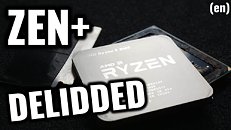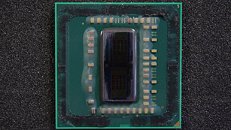In his latest Youtube video, famous overclocker der8auer has delidded his AMD Ryzen 5 2600 processor for the sole purpose of evaluating whether the benefits justify the risk. Since the IHS in the new Pinnacle Ridge processors is soldered directly to the die with Indium, delidding the processors is a tricky but not impossible task. Everything melts when it gets warm enough, and indium starts melting around 156.60 °C. Therefore, der8auer had to use a modified version of his popular Delid Die Mate 2 tool by replacing the acrylic pieces with aluminum while also removing the rubber washer. After baking his Ryzen 5 2600 chip in the oven between 170 °C to 180 °C, Der8auer removed the IHS easily with his delidding tool. For his testing, he replaced the indium solder with Thermal Grizzly liquid metal thermal compound. As expected, the results weren't very impressive. With the Ryzen 5 2600 overclocked to 4.1 GHz with 1.35V, the difference was a mere 4 °C under load. So, there you have it. Don't delid your Pinnacle Ridge processor. It's not worth the effort.




View at TechPowerUp Main Site




View at TechPowerUp Main Site




